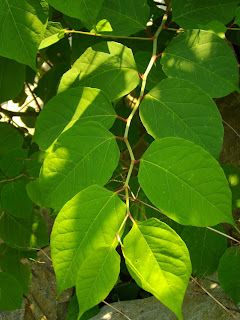- Lilly Tomlin
Bear Creek is a beautiful trout stream in Garrett County, Maryland. In most places it has steep, wooded banks on the southern side, rising nearly straight up a mountain, and a sparsely wooded flood plain on the northern bank. Towering hemlocks and stands of rhodedendron mix with beech and maple and oak, and in fall it's a magical place to hang out. I can see why Native Americans used to live along this stream. A friend of mine is lucky enough to have Bear Creek just outside her back door, and has found many artifacts while digging her garden. Trout fishermen are it's main "users" these days, mostly during the spring. I always thought fisherfolk would not be likely to leave trash since they value their experiences of being out in nature doing their thing.
I've learned differently.
During the last few weeks, I've started cleaning up along Bear Creek between Friendsville and Accident. There's a lot there, I was dismayed to discover, mostly out of sight of the road. People tend to fling things out their car windows in locations that make them difficult to see from the road, like down banks around curves. This makes them harder to find and retrieve, too! But I am up to the challenge.
I started out at the pull-offs, and there are about five of them along this stretch of road. And I started with two tires, which someone had been obliging enough to leave in plain view at a pull-off. I didn't see any trash in the flood plain between there and the stream, and was feeling the magic of the place in the yellow-green woods, when, back by the road I noticed a beer bottle to the left of the pull-off. And another. And another. And many others...iced tea, soda, hard liquer, water, chewing tobacco, more and more beer...I quickly filled my bins and headed off to the landfill, not having finished. My haul included hip-high wading boots, so, so much for fisherfolk being environmentalists. Hopefully most are. What I've been finding is that, in both directions from the pull-off, the litter was mostly down banks around curves, and I can't blame those on fishers.
When I went back a few days later, the pull-off was trashed with Halloween candy wrappers and pages ripped out of a school planner. Kid perps! Further in that direction I found car parts, including a back seat and broken headlight casing, in amongst the beautiful fall leaves and beer bottles. Good place to put 'em, folks! (By the way, the Friendsville trash collection site is about equidistant to this site, but in the other direction from town.)
As I was picking up, I started thinking about how what I do is similar to hunting. Think how great it would be if all the hunters out there put all their gear and effort into retrieving and recycling trash instead of killing deer!
This is from a sign posted by the U.S. Forest Service in Los Padres National Forest:
LITTER LASTS THIS LONG
Cigarette butts............................................1-5 years
Aluminum cans............................................80-100 years
Orange peels...............................................up to 2 years
Plastic bags................................................10-20 years
Glass bottles...............................................1 million years
Tin cans.....................................................50 years
Wool socks.................................................1-5 years
Plastic bottles...............................................Indefinitely
IF YOU PACK IT IN, PACK IT OUT
Here are some pictures my daughter took of Rock Creek Park in Silver Spring, Maryland. This creek and park runs into our nation's capital:




















